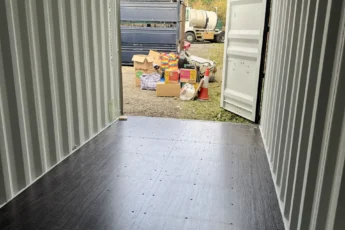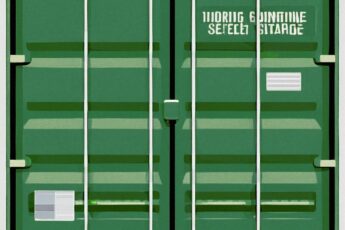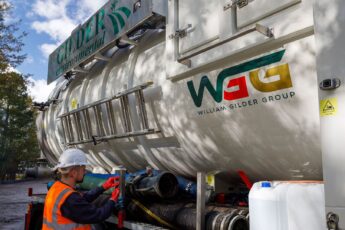How Wet Well Cleaning Prevents Costly Downtime
Wet wells are a critical component of wastewater and sewage infrastructure, yet they often go unnoticed—until something goes wrong. These underground chambers collect wastewater before it is pumped to treatment facilities or onward within the drainage network. If not regularly cleaned, wet wells can become clogged with grease, silt, sludge and non-biodegradable waste, leading to pump failure, blockages, flooding and, ultimately, significant operational downtime.
In commercial, industrial, and municipal settings, unplanned downtime isn’t just inconvenient—it’s expensive. That’s why routine wet well cleaning is essential not just for environmental hygiene, but for protecting infrastructure, maintaining compliance, and keeping systems running efficiently.
This article explores what wet well cleaning involves, why it matters, and how investing in planned maintenance can save your business time, money, and reputational risk.
What Is a Wet Well and Why Is It Important?
A wet well is a below-ground chamber designed to collect and temporarily store sewage, stormwater or industrial wastewater. It is typically located at a pumping station and is connected to a float or sensor system that activates pumps when liquid levels reach a certain height.
Wet wells are essential for:
- Lifting wastewater from low-lying areas to higher elevation sewer mains
- Regulating flow to treatment plants
- Preventing sewage overflow during storms or heavy use
Because they collect and store wastewater, wet wells are exposed to:
- Grease and fat build-up
- Silt, grit and debris accumulation
- Non-organic materials like wet wipes, plastics, and sanitary products
- Toxic gases and foul odours
Left unmanaged, these contaminants create blockages, damage pumps, and reduce overall system efficiency.
The Risks of Neglecting Wet Well Maintenance
1. Pump Failure and Equipment Damage
As waste accumulates in the wet well, it can cause mechanical strain on pumps. Grease and solids interfere with impellers, while sludge and silt reduce pump efficiency. In severe cases, complete pump failure can occur—halting operations and requiring costly repairs or replacements.
2. Emergency Call-Outs and Unplanned Downtime
A blocked or overflowing wet well can result in emergency stoppages, site closures or even flooding. These disruptions are not only operationally expensive, but can also damage property, equipment, and nearby infrastructure.
3. Environmental Contamination
If the wet well overflows, untreated wastewater can be released into the surrounding environment. This poses serious risks to public health and can lead to fines or enforcement action by environmental regulators.
4. Non-Compliance and Reputational Risk
UK businesses must comply with environmental standards under the Environmental Protection Act and Water Industry Act. Failing to maintain critical assets like wet wells can result in non-compliance, legal penalties, and damage to your brand’s reputation.
How Wet Well Cleaning Works
Professional wet well cleaning involves a series of carefully managed steps, carried out by trained specialists using high-performance equipment. Here’s what the process typically includes:
1. Safety and Site Assessment
Before cleaning begins, a thorough site risk assessment is conducted. Wet wells often involve confined space entry, so safety planning—including gas detection and harnessed access—is essential.
2. Waste Removal with Vacuum Tankers
Specialist vacuum tankers are used to extract liquid and solid waste from the wet well. High-powered suction ensures even heavy sludge and grease can be removed quickly and efficiently.
3. High-Pressure Jetting
Once the bulk waste has been cleared, high-pressure jetting is used to clean internal walls, pump components, and pipe inlets. This removes stubborn build-up and helps restore full operating capacity.
4. Waste Disposal and Documentation
All extracted waste is legally transported to a licensed treatment facility. Waste transfer notes and documentation ensure full compliance with Environment Agency standards.
5. Inspection and Reporting
After cleaning, the system is visually inspected and documented. Any faults or recommendations for repair are recorded, giving clients full transparency over the condition of their asset.
Benefits of Regular Wet Well Cleaning
- Reduces Risk of Downtime: Prevents blockages and pump stoppages that interrupt operations.
- Extends Equipment Life: Protects pumps and sensors from wear caused by debris and sludge.
- Improves Pump Efficiency: Maximises flow performance and reduces energy costs.
- Minimises Odour and Gas Build-Up: Reduces unpleasant smells and maintains safer conditions.
- Ensures Legal and Environmental Compliance: Helps meet EA standards and avoid fines or legal action.
Who Needs Wet Well Cleaning Services?
Wet well cleaning is essential for any site that relies on pumps and waste collection infrastructure. This includes:
- Water utilities and councils – maintaining sewer infrastructure and preventing public health incidents
- Food and drink manufacturers – managing greasy wastewater from production lines
- Retail and hospitality premises – ensuring toilets and kitchen drains function without disruption
- Industrial sites – handling high volumes of contaminated or heavy-effluent water
- Housing developments and commercial buildings – preventing blockages in shared drainage systems
How Often Should a Wet Well Be Cleaned?
There is no universal schedule—it depends on your site’s waste volume, usage patterns and the type of material being collected. However, here are some general guidelines:
- High-volume commercial sites: every 3–6 months
- Municipal systems or moderate-use sites: every 6–12 months
- Light-duty private systems: annually or as advised
Many organisations choose to integrate wet well cleaning into a wider planned preventative maintenance (PPM) programme, alongside drain jetting, interceptor cleaning, and CCTV surveys.
Why Choose a Specialist Wet Well Cleaning Provider?
Wet well cleaning is not a job for general maintenance crews. It requires confined space qualifications, environmental licenses, and purpose-built vehicles. William Gilder offers:
- ✅ Fully trained, experienced operatives
- ✅ Confined space and COSHH-compliant procedures
- ✅ Modern vacuum and jetting tankers
- ✅ Environment Agency waste carrier registration
- ✅ Nationwide service and 24/7 emergency response
- ✅ Full reporting and compliance documentation
Our team understands the urgency and complexity of wet well maintenance—and we’re equipped to deliver safe, fast and reliable service every time.
Conclusion: Clean Today, Save Tomorrow
Wet wells are essential to the safe and efficient operation of wastewater systems. But when left unattended, they can become a hidden liability—causing breakdowns, overflows, and unplanned downtime that affect your operations and bottom line.
The good news? Regular cleaning is simple, cost-effective, and highly preventative. By scheduling professional wet well cleaning with a trusted provider like William Gilder, you ensure that your drainage infrastructure stays compliant, your pumps stay reliable, and your operations stay running.
To book a service or discuss a preventative maintenance plan, visit our Wet Well Cleaning page or contact the team today at our Gloucestershire HQ.







